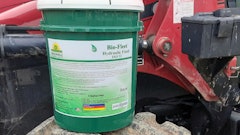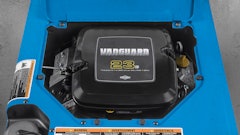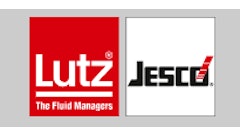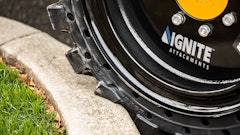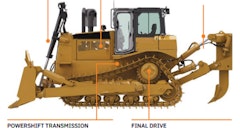Those following the transportation industry are witnessing a significant shift in focus — from emissions to fuel economy — by regulators, OEM, lubricant manufactures and others. Over the past few decades, the industry’s emphasis on emissions reductions has been incredibly successful. In fact, when compared to the early 70s, when on-highway diesel engines were largely unregulated, NOx emissions in new vehicles have dropped a staggering 99 percent. Diesel engines are now so clean that the transportation industry — including regulators, OEM, lubricant manufacturers and others — are able to look at new areas of concern in the transportation industry, like fuel economy.
By some estimates, fuel is upwards of 40 percent of a fleet’s operating costs. Iimprovements in fuel economy can have a significant bottom-line impact for fleets and owner operators alike.
There are many paths to take when looking at a program to reduce fuel consumption. Areas that have seen increased levels of focus over recent years include driver behaviors, aerodynamics, trailer skirting, reduced engine idling, speed management, tire pressure, low friction tires and optimal engine rpm.
Lubricants can also play a role in helping to reduce fuel consumption. PC-11, the next proposed API commercial engine oil performance category, expected to be released in 2016, will place a heavy focus on improving fuel economy. Still, there is no reason to wait until 2016 to consider engine oil as part of your fuel economy strategy.
There are diesel engine oils available now that claim to provide fuel consumption savings of up to 4.5 percent depending on class of vehicle, load, lubricant viscosity grade, and operating environment. Even a 1 percent gain in a Class 8 truck traveling 130,000 miles per year can result in saving of approximately $900. Spread across a fleet of vehicles, these savings add up quickly.*
*Operation of one Class 8 Truck driving 130,000 miles per year and averaging 6 mpg. The calculation is based on paying $4.14 per gallon of diesel, and does not include DEF savings. It also assumes similar oil drain intervals and price differential as compared to an SAE 15W-40 for the oil change. Individual results may vary based on a number of factors.
One might think the process of converting from the traditional SAE 15W-40 engine oil to a 10W-30 would be fairly easy, but change is never that straighforward. A transition of this nature can have positive or negative impacts, so careful consideration is critical.
When switching to a more fuel efficient (versus SAE 15W-40), lower viscosity engine oil, like an SAE 10W-30, fleets and owner operators should consider the following:
- Consult with your OEM: When considering any engine oil move — from extending drain intervals to switching viscosity grades for fuel economy gains — your first move should always be to consult with your OEM. Certainly if your engine is under warranty, you want to confirm that you are not putting it in jeopardy. Any move you make needs to be endorsed by your OEM. Even if you are not under warranty, your OEM has extensive experience with its engines under various environments and with various engine oils. That information can be extremely valuable in guiding you through a change.
- There are multiple sources of information: Beyond your OEM, seek the insight of your lubricant manufacturer. Lubricant manufacturers spend millions of dollars testing lubricants under various conditions in multiple engine types. This information can be very valuable when a conversion to a new viscosity grade is being considered. These lubricant manufactures also work through a network of marketers.
- Understand the potential issues: In some cases, a change in viscosity grade has been known to cause an issue with the oil pressure indicator. At low rpms, it is possible to trigger a low pressure warning, which could power down an engine. OEMs will know which engines are likely to experience this issue and can help find a solution.
- Have a plan: In particular, if you manage a fleet, you should have a transition plan. Based on input from OEMs and lubricant providers, target a select group of trucks in your fleet and run a test with lower viscosity oils. Find a group of trucks that represents the varying range of operating conditions and power plants you use to see where the greatest benefits are and if there are areas where a switch will make sense. Identify engines which may not benefit or may not be good candidates for a lower viscosity oils.
- Use real data: When making a change of this nature, it is important to base decisions on hard numbers. A structured used oil analysis program may be used to help assess the impact of transitioning to a lower viscosity engine oil on engine durability. You will not realize the benefit of a fuel economy improvement if it comes at the expense of engine durability.
- Lower viscosity products are proven: Premium lower viscosity diesel engine oils have been proven in the laboratory and the field. Another benefit of lower viscosity oils is their cold weather protection features. With better fluid properties at lower temperature, these oils do a better job of coating critical engine parts faster, helping to increase engine durability in cold environments. If you have any concerns, ask your lubricant manufacturer for testing data. They should be happy to provide it.
- Look for specification: Make sure the oils you are using meet the key industry specifications required by your OEM. Quality lower viscosity diesel engine oils meet all the key API and OEM specifications.
Fuel economy is major consideration for individuals, fleets and the transportation industry as a whole. By combining effective driver habits, aerodynamics, speed management and other proven tactics, significant fuel economy gains can be achieved. With proper planning and careful consideration, switching to a lower viscosity engine oil can help complete a robust fuel economy program that has the potential to yield excellent returns for fleets and drivers alike.
Content originally published by Chevron








